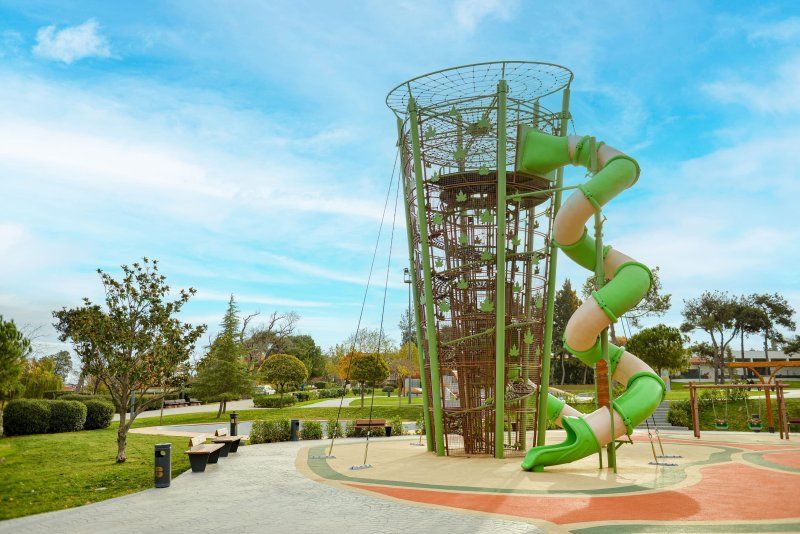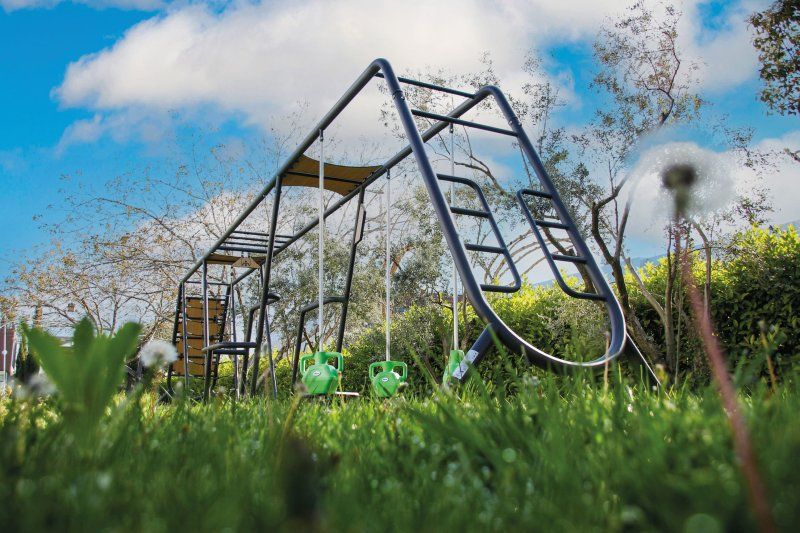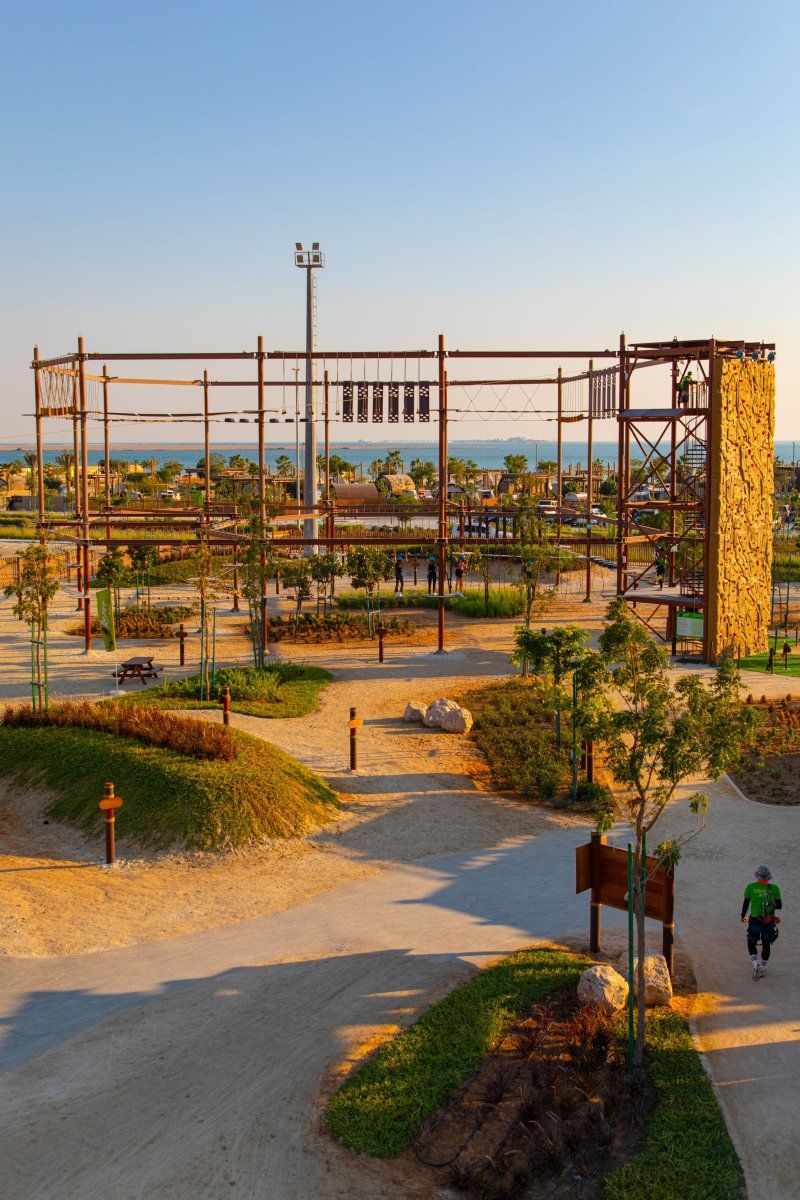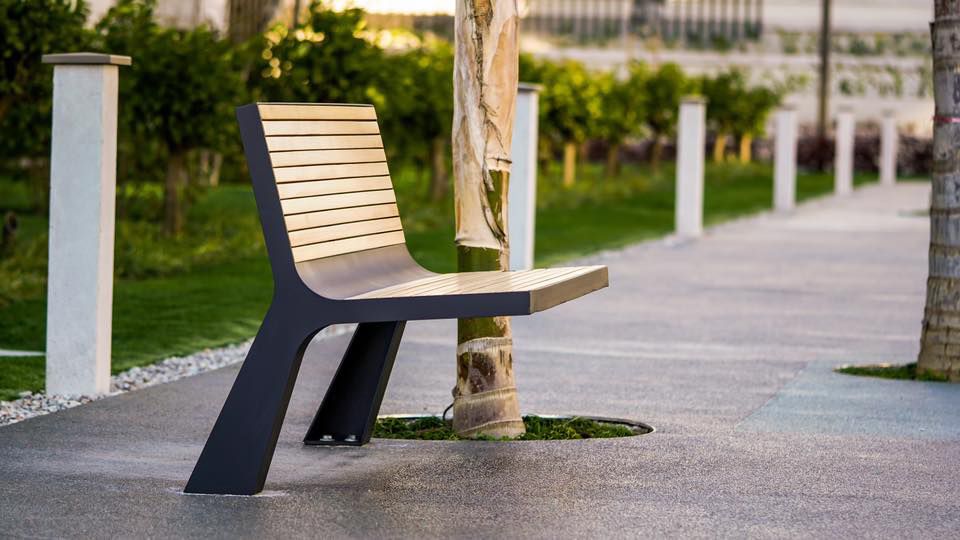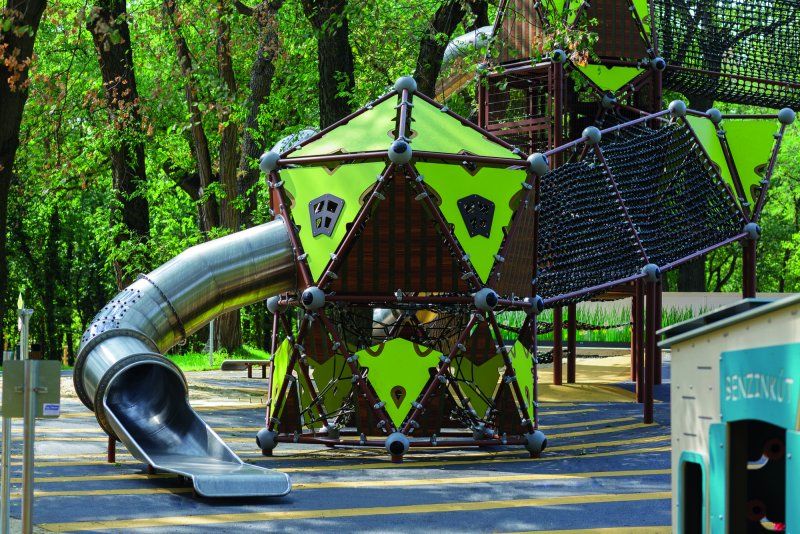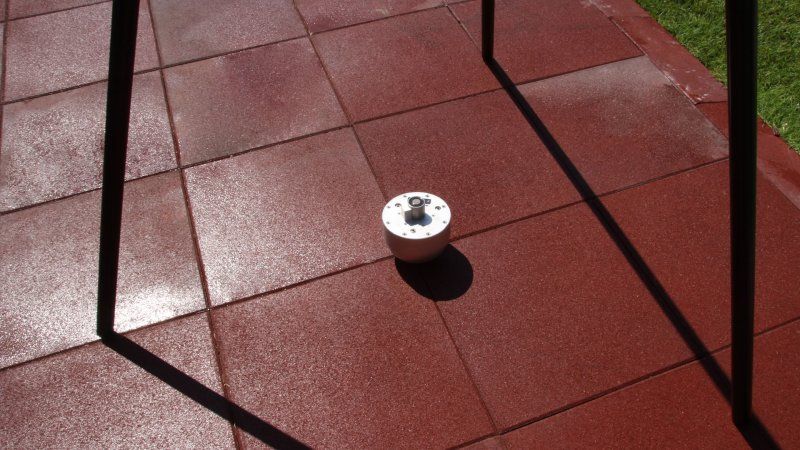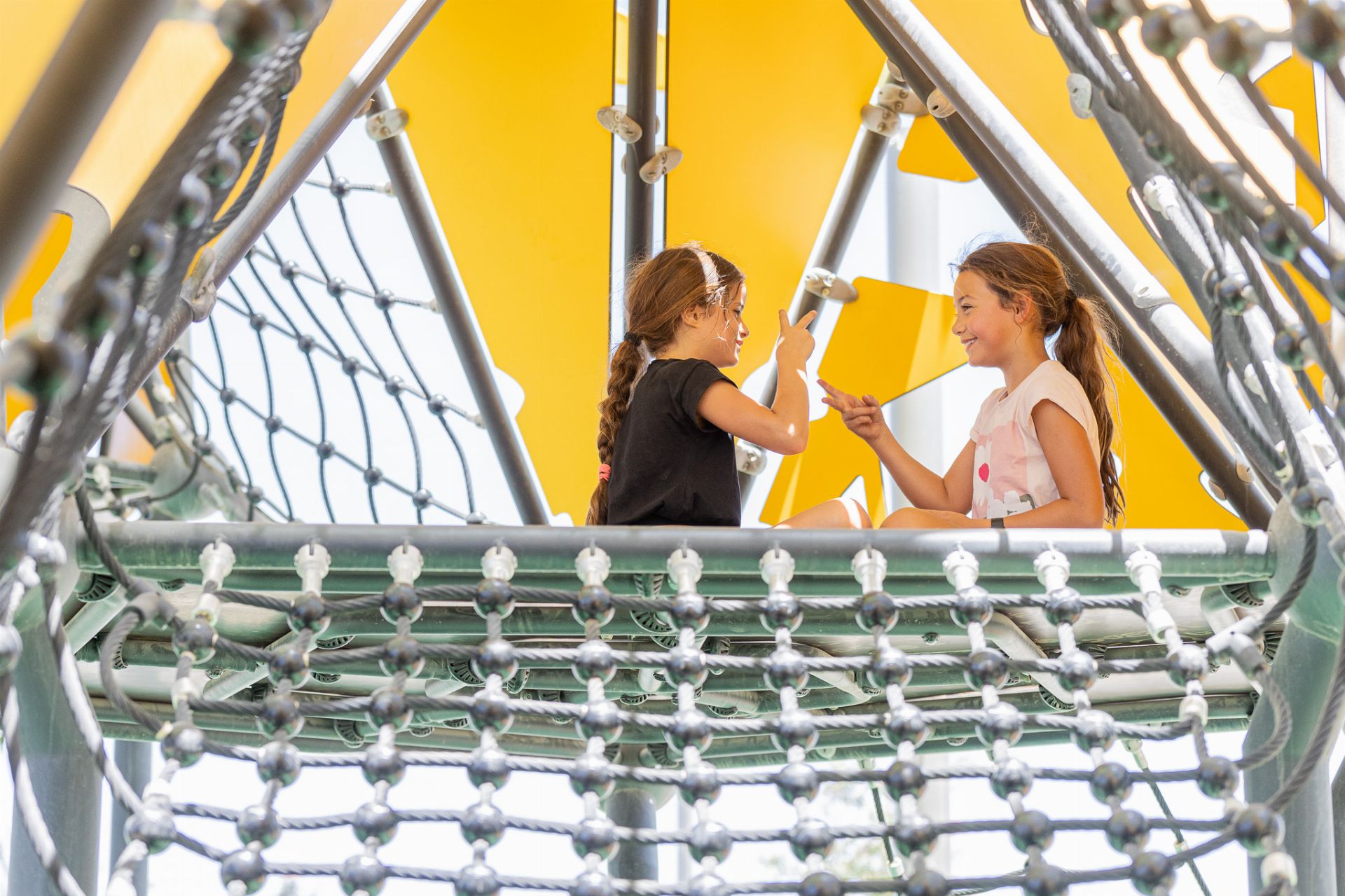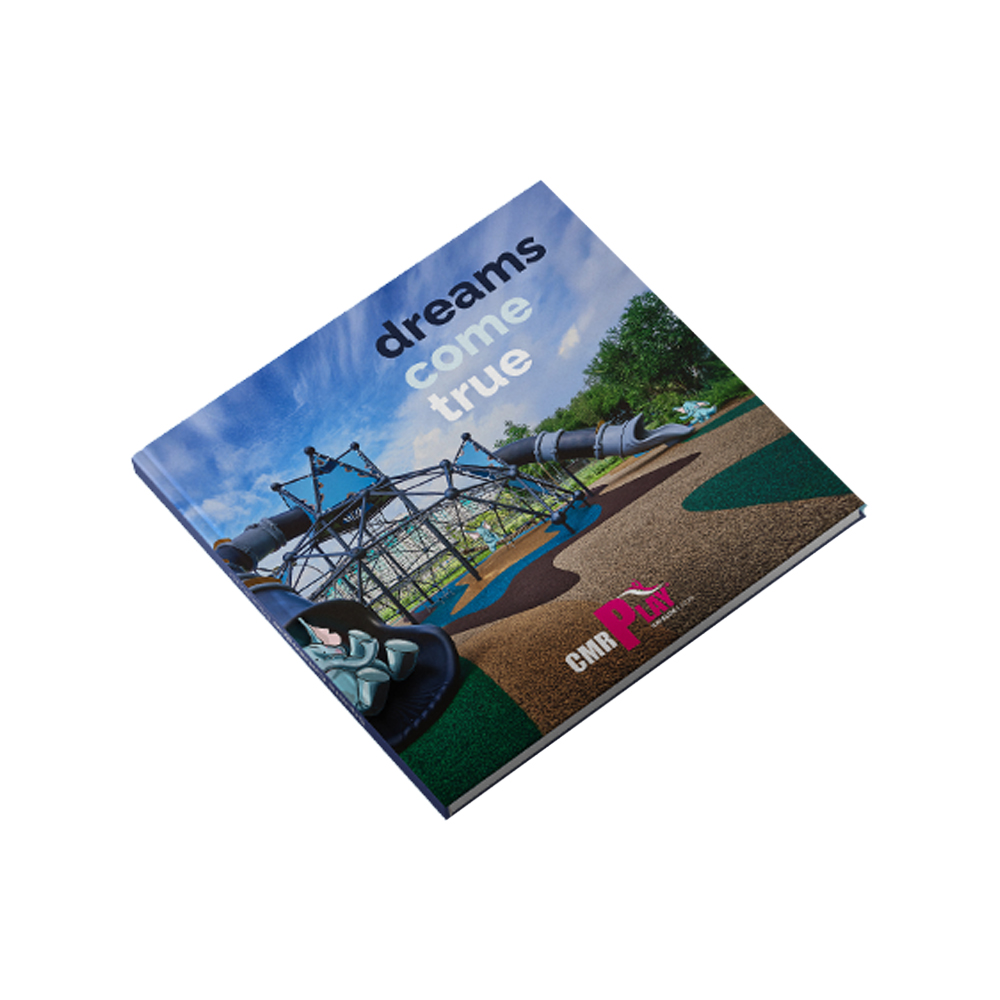
A NEW METHOD FOR MANUFACTURING OF ROPES USED IN NET OR ROPE CLIMBING GAME GROUPS
Assoc. Prof. Dr. Fatih KAHRAMAN
Dokuz Eylül University
Zafer SAYIN
Deputy General Manager, Cemer Kent Equipment
Numerous studies today show that the environments used for play are significant (Bartlett, 1999; Youell, 2008). Specific environments have different cognitive, social, and motor developmental impacts on children. Outdoor play, in particular, allows children to develop skills such as creativity, imagination, enhancing social connections, and acquiring learned behaviors. There are two types of outdoor (public) play areas: natural and built. Natural play areas provide variety for sensory experience and physical development, which are critical for childhood experiences in the open air (Parsons, 2011).
Many researchers have found that outdoor play is one of the most important factors in establishing a relationship and connection with the outside world for children and has lasting effects on the formation of the child’s environmental identity. Moreover, some researchers highlight that outdoor play provides health benefits, such as increased attention levels and physical activity (Gray et al., 2015; Burdette et al., 2005; Wickel, 2013).
In addition, it is stated that, in the absence of a playground within the neighborhood, “children largely do not notice most of the environmental hazards they encounter due to the urge to play, making the environment dangerous.” In other words, children’s instinct to play often leads them to unsafe places, such as streets, building sides, abandoned areas, and street corners (Bixler & Floyd, 1997). Therefore, outdoor built play areas provide children with safer play zones under family supervision in addition to the aforementioned advantages.
In fact, risk is a part of play for children and increases their interest in playing. At a developmental level, the purpose of play is also to safely explore nature and the environment, interact, imagine together, assess risks, and make decisions about how to respond to them, allowing children to learn about themselves and their boundaries (Ball, 2002).
Playgrounds with no risk or overly controlled/restricted environments lead to children with lower motor control, less self-confidence, and lower physical development who seek less risk. Therefore, many preschool staff, parents, and childcare providers emphasize that a balance should be struck between allowing children to encounter risks and challenges and preventing serious injuries during play (Sandseter, 2010).
The perceived risk in play makes it more attractive to children. Therefore, without risk and danger perception in play, children quickly lose interest without having the sense of testing themselves (Hanrahan & Duncan, 2019). Dynamic play equipment, such as rope-based games, plays a crucial role in developing this perception. In rope climbing games, for instance, children improve their cross-coordination skills and learn to maintain good balance and concentration.
Today, there are climbing play tracks used for children, as well as for teenagers and adults. Some of these play tracks are designed as climbing nets, while others contain climbing groups with ropes or similar structures that are suitable for hand-grasping. There are also play tracks that include both basic designs or feature variations of the basic characteristics. However, the common feature of all of these designs is the effort to grip and climb the rope or net tightly, allowing the player to engage in exercises or games similar to natural environments.
Rope Climbing Play Group
The term "rope" used in rope-based play equipment generally refers to galvanized steel cables wrapped in polyester threads. The basic building blocks of a rope are the wires within it. Threads made of materials such as nylon, polypropylene, or polyester are wrapped or glued over one or more layers on the wire in a specific pattern. The wires are usually gathered around a central core in a spiral fashion to form a rope. The most important feature of ropes is having a surface texture that ensures an optimal grip.
Steel ropes work under high tension levels and are almost constantly exposed to varying loads. These ropes are subject to significant wear and fatigue (Chaplin, 2005). As a general rule, a rope made of a few thick wires has better wear resistance but lower fatigue resistance compared to a rope of the same size made from many smaller wires (Union Rope, 2016). Therefore, as the number of wires in a rope increases, wear resistance decreases. For this reason, steel wires in ropes used in playgrounds are coated with threads made of materials like nylon, polypropylene, or polyester. These threads are either woven directly or glued with chemical adhesives to prevent movement during use. However, during use under load, the woven or glued threads on the steel wire may open, deteriorate, or wear out. This leads to the wires corroding or wearing out under environmental conditions, which shortens the lifespan of the rope.
A solution has been developed to ensure that these threads are rigidly attached to the wires. The production of the ropes used in this study was carried out in two stages. In the first stage, the steel wires are woven with polyester (PES) threads using a braided technique to increase their resistance to friction and breakage. In the second stage, the woven wire product is arranged in 6 or 7 strands on a winding machine and wrapped around a guide that passes through the center. In traditional production, the polyester (PES) threads on the ropes are glued to the wire to prevent them from sliding off. However, in this study, instead of using glue, the rope that comes out of the winding machine is made sticky by a special method.
The effects of the applied method on the ropes were investigated through metallographic examination of the steel wires and the threads on them, as well as mechanical testing.
For the metallographic examination, samples were subjected to polishing and grinding processes and then etched. The etching was performed using a 4% picral solution (4 mg picric acid and 100 ml ethanol), commonly used for spring steels, for 5-15 seconds. Microhardness measurements were made under a 9.8 N load and a 10-second waiting period. Tensile tests were performed at room temperature with a speed of 10 mm/min. The results obtained from these tests were compared between ropes produced using the traditional and special production methods.
The microstructure images of the steel wires in the ropes produced with the traditional method (using glue) and the special method are shown in Figure 4. As can be seen in the image, no significant change occurred in the material structure.
As a result of this method, the polyester threads near the steel wires merge more (Figure 5). However, some areas further away from the steel wires are only partially merged (Figure 6). These areas did not cause the polyester threads to slip off because they are farther from the steel wire.
Hardness measurements were taken at roughly the same points on both types of wires. The hardness scan results and hardness traces are shown in Figure 7. The average hardness value of the steel wire in the rope produced with the traditional method was 521 HV, while the average hardness value of the steel wire in the rope produced with the special method was 481 HV. It is observed that there was a slight decrease in hardness with the special method. This decrease in hardness is due to the low cooling speeds that occur during self-cooling of the rope. These low cooling speeds lead to a stress-relieving effect in the steel wire.
This stress-relieving effect also influenced the tensile strength of the steel wire. The average tensile strength of the steel wire in the rope produced with the traditional method was 2142 N/mm2, with an average elongation of 6%. In contrast, the average tensile strength of the steel wire in the rope produced with the special method was 2010 N/mm2, with an average elongation of 7.3%. This results in a decrease of approximately 130 N/mm2. However, this reduction in stress also increased the wire's ability to deform, which suggests an increase in impact toughness (strength x deformation rate).
CONCLUSION
To increase the resistance of ropes used in net or rope climbing play groups to unraveling, abrasion, and friction, a method was developed in which multiple conductive wires are woven with petroleum-based materials to create a braided rope. Then, these braided ropes are wound around at least one core rope and adhered together using a special method. The applied tests and inspections confirm that this production method prevents potential issues such as unwinding, degradation, and wear on the braided structure of the core rope, caused by torsion, pulling, compression, etc.
ACKNOWLEDGEMENTS
This study was carried out by Cemer Kent Ekipmanları San. Tic. A.Ş. under the project "Design Studies of Themed Systems Integrated Rope Play and Rope Climbing Stations" (Project code TM200003), supported by the Ministry of Science, Industry, and Technology.
REFERENCES
Ball, D. (2002). Playgrounds: risks, benefits, and choices. Middlesex University: HSE Books.
Bartlett, S. (1999). Children’s experience of the physical environment in poor urban settlements and the implications for policy, planning, and practice. Environment and Urbanization, 11(2).
Bixler, R.D., & Floyd, M.F. (1997). Nature is scary, disgusting, and uncomfortable. Environment and Behavior, 29(4).
Burdette, H.L., Whitaker, R.C. (2005). A national study of neighborhood safety, outdoor play, television viewing, and obesity in preschool children. Pediatrics, 116(3), 657-62.
Chaplin, C.R. (2005). The fatigue and degradation mechanisms of hoisting ropes. Hoist and Haul Conference, Perth, Western Australia, 5 - 7 September.
Gray, C., Gibbons, R., Larouche, R., Sandseter, E.B.H., Bienenstock, A., Brussoni, M., Chabot, G., Herrington, S., Janssen, I., Pickett, W., Power, M., Stanger, N., Sampson, M., Tremblay, M.S. (2015). What is the relationship between outdoor time and physical activity, sedentary behavior, and physical fitness in children? A systematic review. International Journal of Environmental Research and Public Health, 12(6), 6455–6474.
Hanrahan, V., & Duncan, K. (2019). Risky outdoor play in early childhood: feel the fear and learn from it. He Kupu, 6(2).
Parsons, A. (2011). Young children and nature: outdoor play and development, experiences fostering environmental consciousness, and the implications on playground design (Master’s thesis). Virginia Polytechnic Institute and State University.
Sandseter, E.B.H. (2010). Scaryfunny, a qualitative study of risky play among preschool children (Ph.D. thesis). Norwegian University of Science and Technology.
Wickel, E. (2013). Variables associated with active and inactive behavior during the after-school period. Pediatric Exercise Science, 25(2), 288-99.
Wire Rope User’s Handbook, 2016, UnionRope Wire Co. Accessed at: https://www.unionrope.com/Portals/0/Documents/Technical/Wire-Rope-Basics/wire-rope-handbook.pdf
Youell, B. (2008). The importance of play and playfulness. European Journal of Psychotherapy and Counselling, 10(2).

